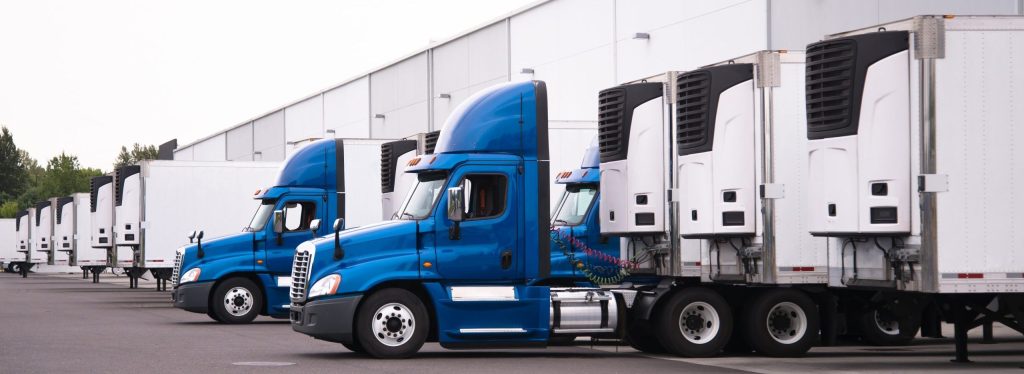Pressure to Increase Throughput
Manufacturing, warehousing, and distribution facilities around the world are faced with the constant pressure to increase production and throughput to meet consumers growing demand for goods. Some facilities do this in a variety of ways such as introducing automated equipment into their manufacturing processes to reduce the amount of time to produce goods. Others redesign the layout of their working environments to optimise space and some even consider adding on to their existing buildings to accommodate the manufacturing or storage of additional goods. These are all viable solutions, but they are costly.
The Loading Bay is a Valuable Asset
The loading bay is an environment often overlooked when operation mangers are tasked with increasing throughput. Loading bays are a key part of the supply chain and are a valuable asset and should be seen as one. Loading bays are what make a site continue to operate day after day, receiving and shipping goods – impacting profits.
An inefficient loading bay impacts the amount of goods able to be received or shipped out of a facility, resulting in low facility throughput. Optimising efficiencies in this environment will allow for increased throughput and maximised loading bay capacity.

Benefits of Maximised Capacity at the Loading Bay
Ensuring your loading bays are operating at maximum capacity will not only increase your facilities throughput but also provide several other benefits to your site such as performance optimisation, increased understanding, safe working practices, and reduced costs.
Performance Optimisation
Ensuring your facility is operating at maximised capacity ensures that site performance is optimised. Through the identification of inefficiencies and bottlenecks affecting your loading bays, the necessary changes can be made to optimise performance. Some examples of this include utilising all your loading bays instead of only a select few and giving bay schedulers full visibility of which loading bays are in use or available – minimising the risk of incorrect bay assignment.
Increased Understanding
An increased understanding of your loading bay capacity will allow for any results from changes made in bay operations to be tracked. In addition, planning bay activities will become easier as you will now be aware of your limits. Increased understanding of your loading bay will also make the facility aware if they do truly need to invest funds to expand their facility, add additional loading bays, or introduce automated technologies in other areas of the plant.
Safe Working Practices
To ensure your facility maximises their loading bay capacity, it is critical the bays are operating in a safe manner. In the UK, 246,000 workplace accidents are recoded every year and HSE statistics confirm that loading bays are accident hotspots, with 25% of all reported injuries and 12% of accidents rated as fatal or major occur while loading or unloading. Additionally, for every accident there are about 600 near misses (EHSToday). A safe loading bay environment increases efficiencies as it reduces the risk of downtime resulting from injury or a near miss.
Reduced Cost
It is simple, not operating at maximum capacity is costly, extremely costly. Accidents coupled with inefficiencies and avoidable fines can cost a UK business operating in the warehouse industry up to £10m per year. Detention fees, lack of data, poor bay utilisation and manual data entry are serious problems that are affecting facilities. These issues often make it difficult to plan bay activities, hamper site performance, decrease load capacity and result in inaccurate data and high costs.
It is important to understand, measure and operate at your facility’s maximum capacity. Doing this will result in reduce costs, saving you millions of dollars annually and increasing profits.

A Solution to Maximise Loading Bay Capacity
Maximising the capacity of the loading bay environment could be the key to success your facility is missing. Fortunately, Castell Safety International provides a solution that allows for facilities to achieve this.
Salvo InSite is a digital add on to Castell’s existing Salvo Loading Bay Safety System. The digital platform provides real time bay status, performance analytics, and traceability reports through a web-based software application.
With Salvo InSite, facilities can optimise performance by identifying inefficiencies and bottlenecks in loading bay operations through automatic data capture and visualisation – allowing loading bay capacity to be monitored 24/7. Results can be tracked by gaining a greater understanding of how operational changes are affecting loading bay performance through dashboards, historical reports and live KPI’s. With Salvo InSite, safety at the bay can be managed through site usage reports, ensuring that the loading bay safety system is being used correctly. The digital solution also reduces the costs and effort associated with manual data entry, analysis, detention fees and claims, through automatic data capture and historic traceability capabilities.
With Castell’s Salvo Logistic Solutions facilities can make informed decisions to maximise performance, load capacity, and throughput at their facility while keeping personnel safe.
For more information about Salvo Logistic Solutions, click here.
We’ve created a simple how-to guide on how to set efficiency goals at your loading bay through 5 simple steps. You can read the how-to-guide here.
